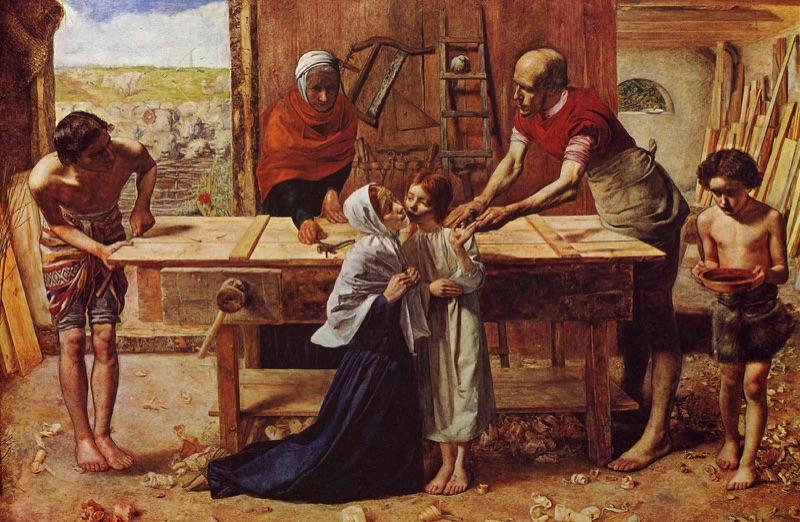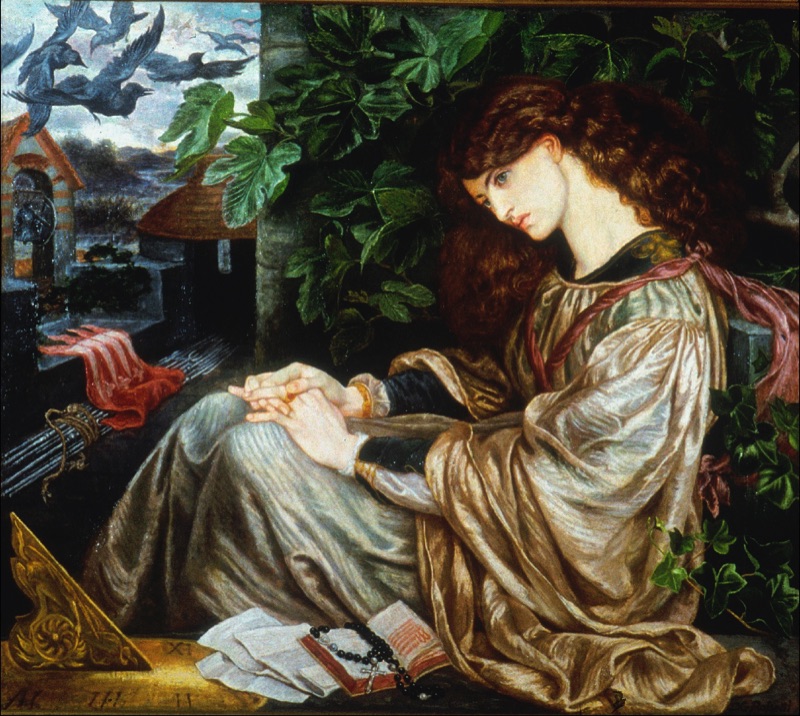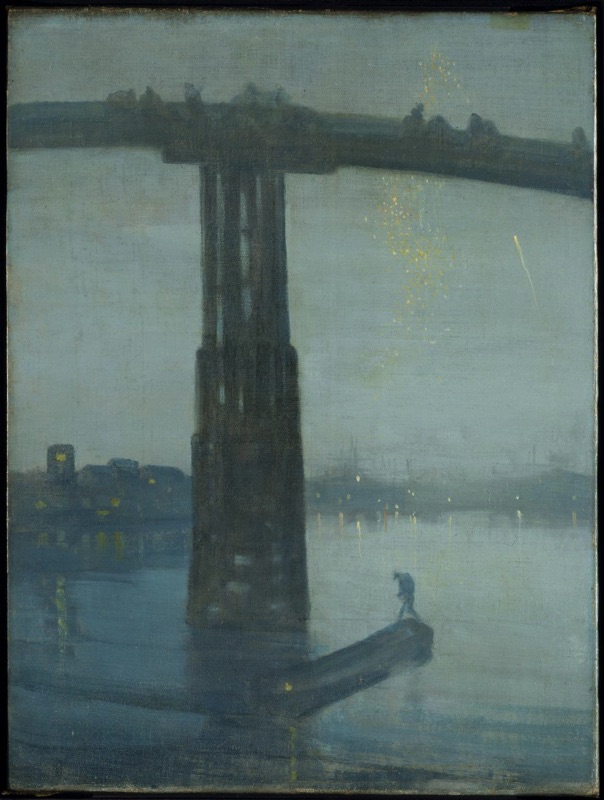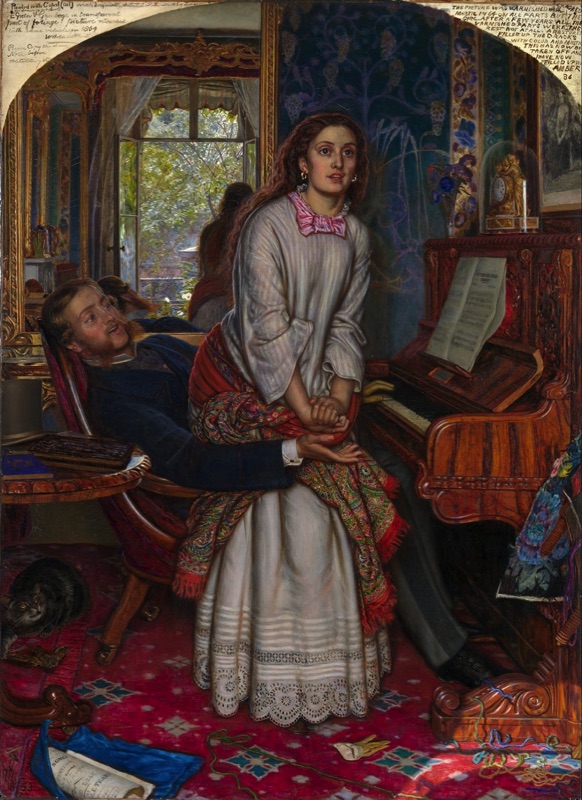Art in Victorian Britain
pre-class prep: read Chu pp. 323-51 (except the bits on photography, which we'll cover next time) (PDF)
read Smarthistory essay Formalism I: Formal Harmony
read 'Action for Libel against Mr Ruskin' (PDF)
discussion questions: Those named for the questions below should come prepared to present a short (3-5 minute) response to that question.
1. (Lilian A.) Closely analyze Millais' Christ in the House of His Parents and Holman Hunt's The Awakening Conscience to explain the key characteristics of Pre-Raphaelite art in both their style and their use of symbolism. How do these characteristics help the artists achieve their overall moral goals?
2. (Cecelia C.) The Whistler-Ruskin trial (PDF) is a good example of how a conservative public reacted to a new style and a new purpose for art. What did Ruskin’s lawyers object to about Whistler’s art and what does this reveal about their implicit definitions of art? What did Whistler state as his aims and how did he defend the novelty of his style? Analyze his Nocturne in Black and Gold (Falling Rocket) as an example.
people, terms, and concepts: Queen Victoria (reigned 1837-1901), John Ruskin, symbolism, the Pre-Raphaelite Brotherhood, Aestheticism, 'art for art's sake'
key points:
This topic examines two strands of mid-to late-nineteenth century art in England during the reign of Queen Victoria: the Pre-Raphaelite Brotherhood (PRB) and the Aestheticists
• What are the characteristics of Pre-Raphaelite art, and how did these characteristics help the artists achieve their overall moral intent? Be able to discuss both the movement's fanatical obsession with precise, scientifically-accurate detail, and its use of symbolism to convey higher spiritual content. (Be able to analyze lots of symbolism in the PRB works below.) Why did they see no contradiction between objective, scientific accuracy and spiritual revelation?
• What were the aims of the Aestheticists such as Whistler, and how does their motto, 'art for art's sake,' reject traditional roles for art such as imitating nature, expressing feelings, teaching didactic lessons, and providing spiritual revelation? What does the term 'aesthetic' mean, and why did the Aesthetes often use analogies with music to talk about the purpose of visual art?
John Everett Millais, Christ in the House of his Parents, Pre-Raphaelite, 1849-50
William Holman Hunt, The Awakening Conscience, Pre-Raphaelite, 1853-54
Dante Gabriel Rosetti, La Pia de Tolomei, Pre-Raphaelite, 1868-80
James Abbot McNeill Whistler, Nocturne in Blue and Gold (Old Battersea Bridge), Aestheticism, 1872-75




